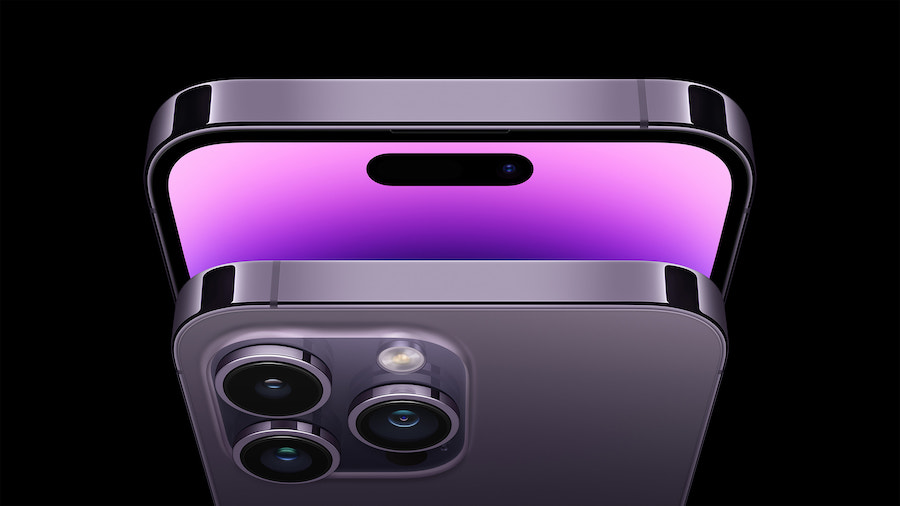With a plethora of smartphones available on the market, now we can easily get a good device from popular companies like Apple, Samsung, LG, Sony, Google, or OnePlus. However, consumers always want to get the most out of their money. We all want to know if the manufacturers are making significant profits from their products. Therefore, we investigate the production costs of the top-selling phones on the market and this could be an important suggestion for your purchase decision.

The production cost is based on teardown of the devices, analysis of specs and information from suppliers. The costliest parts are often the core processors, display, memory, and camera module. Notice that we don’t take into account other costs like marketing, research and development, distribution, staff, accessories, packaging, or software, so the manufacturers wouldn’t earn that much profit from their products. The costs also don’t reflect bulk discounts when those manufacturers order parts in bulk.
Let’s check out the list of smartphones with information about production cost (Bill of materials plus assembly cost), full retail price at launch, and profit margin.
| Smartphone | Production Cost | Retail Price | Profit margin |
| Apple iPhone 14 Pro Max (128GB) | $501 | $1,099 | 54.4% |
| Apple iPhone 13 Pro Max (256GB) | $438 | $1,199 | 63.5% |
| Apple iPhone 13 (512GB) | $407 | $1,099 | 63.0% |
| Apple iPhone 12 Pro (128GB) | $406 | $999 | 59.4% |
| Apple iPhone 12 (64GB) | $373 | $829 | 55.0% |
| Apple iPhone 11 Pro Max (512GB) | $490.50 | $1,449 | 66.2% |
| Apple iPhone XS Max (256GB) | $443 | $1,249 | 64.5% |
| Apple iPhone X (64GB) | $389.50 | $999 | 61.0% |
| Apple iPhone 8 Plus (64GB) | $295.44 | $799 | 63.0% |
| Apple iPhone 8 (64GB) | $254.87 | $699 | 63.5% |
| Apple iPhone 7 Plus (32GB) | $277.66 | $769 | 63.9% |
| Apple iPhone 7 (32GB) | $224.80 | $649 | 65.4% |
| Apple iPhone 6S Plus (16GB) | $236 | $749 | 68.5% |
| Apple iPhone 6S Plus (64GB) | $253 | $849 | 70.2% |
| Apple iPhone 6S (16GB) | $211.50 | $649 | 67.4% |
| Apple iPhone 6 Plus (16GB) | $215.60 | $749 | 71.2% |
| Apple iPhone 6 Plus (128GB) | $263 | $949 | 72.4% |
| Apple iPhone 6 (16GB) | $200.10 | $649 | 69.2% |
| Apple iPhone 6 (128GB) | $247 | $849 | 70.9% |
| Apple iPhone 5C (16GB) | $183 | $549 | 67% |
| Apple iPhone 5S (16GB) | $199 | $649 | 69.3% |
| Apple iPhone 5S (64GB) | $218 | $849 | 74% |
| Apple iPhone 5 (16GB) | $207 | $649 | 68% |
| Apple iPhone 4 (16GB) | $188 | $599 | 68.6% |
| Apple iPhone 4S (16GB) | $188 | $599 | 68.6% |
| Google Pixel XL (32GB) | $285.75 | $769 | 62.84% |
| Google Pixel 5 | $314 | $699 | 55.1% |
| Google Pixel 6 Pro (128GB) | $485.50 | $899 | 46.0% |
| Samsung Galaxy Note 3 (32GB) | $232.50 | $699 | 69.6% |
| Samsung Galaxy Note 8 | $369 | $950 | 61.2% |
| Samsung Galaxy S3 (16GB) | $213 | $549 | 61.0% |
| Samsung Galaxy S4 (16GB HSPA+) | $244 | $579 | 58.0% |
| Samsung Galaxy S5 (32GB) | $256 | $569 | 55.0% |
| Samsung Galaxy S6 (32GB) | $275.50 | $699.99 | 60.6% |
| Samsung Galaxy S6 Edge (64GB) | $290.45 | $799.99 | 63.7% |
| Samsung Galaxy S7 (32GB) | $255 | $599 | 57.4% |
| Samsung Galaxy S8 (64GB) | $307.50 | $720 | 57.3% |
| Samsung Galaxy S8 Plus | $343 | $850 | 59.6% |
| Samsung Galaxy S9 Plus (64GB) | $379 | $839 | 54.8% |
| Samsung Galaxy S10 Plus (128GB) | $420 | $999 | 57.9% |
| Samsung Galaxy S20 Ultra (256GB storage, 12GB RAM) | $528.50 | $1,350 | 60.9% |
| Samsung Galaxy S21+ SM-G996BDS (256GB) | $508 | $1,049.99 | 51.6% |
| Samsung Galaxy S21 Ultra 5G (128GB) | $533 | $1,199 | 55.5% |
| Samsung Galaxy Z Fold 4 5G | $670 | $1,799 | 62.8% |
The prices we listed above are the full prices at launch, most of them could have been adjusted after a few months or even weeks. We don’t use subsidized prices from carriers because you have to pay more during the contract. Therefore, make sure to double check the price before purchasing.
Disclosure: We might earn commission from qualifying purchases. The commission help keep the rest of my content free, so thank you!




monkeybone says
and if that is not the case why is there deals all over the place for these so called 300$ phones to make then how come we can get them for 20 or 30 bucks if we just get the service hello any bells going off here come on think!!! and how come the company themselfs use 3rd party vendors and that are able to sell them to u for as low as 20 bucks how stupid can people get it boggles my mind so we cant blame them for it its simple deduction here i could go on about it to much for here people wake up please for all our sake
Crumb says
What 3rd party is selling you an IPhone 11 for 20bucks with a new plan? The 20 dolllar phones and free phones with a plan stopped in like 2010 maybe sooner.
Johann vL says
Actually profit margin calculation in the table is incorrect .
The assumption is that the retail price equals 100%. This is incorrect : Profit margin should be based on the manufacture price, not the retail price i.e. if a product costs $100 to manufacture and I add a profit margin of 100% , then retail should be $200.
base on the table provided , tjhe profit margin on an iPhone 12 is 246% and a Galaxy S01+ has a profit margin of 238%.
jay ram says
So I diont think he took into account that when a company orders millions of the same part they get a SUBSTANTIAL discount. I believe he priced the phones like if joe blow went to Microcenter and bought the parts at retail to build one phone. I have read that the actual material cost for making the phones is roughly around 80.00 to 100.00 per phone by manufacture. You can find this info at the FRED economic data. This includes all cost per final product.
Sean says
Apple and Samsung are ripping people off! Just quit whining and keep being sheep and pay those ridiculous prices like you have been, unless you’re gonna do something about it. Keep making the rich, richer.
Pankaj krishna says
then go to make a poor company rich. theyll one day become rich and do what samsung and apple does( just like one plus)
Brian J Baumgartner says
What makes you say they “are ripping people off”? That is a strange conclusion.
doug says
wake up 2000$ for a motorola razr flip common you really must have alot of money to blow
Paul says
LOL, LOL, LOL, these cost vs retail are not even close to being accurate. You buy a product from the retailer for $100 it does not cost $40 to manufacture unless your buying directly from the manufacturer. The cell phone retailer is the end of a 2 to 6 link chain. Everyone wants a piece of the action from concept, to development, to parts suppliers, and manufacturers, and marketers, and finally the retailers, not to mention the service providers. Some service providers have special deals where they buy the phone if you pay their service fee but not many anymore. So that phone you just paid $1,000 for costed a lot less than $400 to manufacture. The 2 largest pieces of that pie go to the manufacturer and the retailer with the sales person recieving about 2-4% commission on the sale.
Lets do the math:
retail = $1,000
commission – $20 (for sales person)
manufact. – $100 (this cost includes r+d)
mkting. – $5
retail markup – $25 (this is what the stores get out of the sale, they also get a commission on the service)
thats $150 – $250 (I’m being generous)
the manufacturer i-phone, Samsung, ? makes $750 – $850 per phone profit
thats how they make $100,000,000 profit of one model and billions off the entire line of products.
the same is true for the service providers, if they charge you $50 per month for the service they need to make a huge profit so their cost to provide the service is about $3-$5 the rest is profit. What is Sprint’s corperate value? 2-3 billion $$$. they can’t make that kind of money on just 50-60% profit, it has to be a huge margin.
Mike Oxlong says
The manufacturing cost for a $1,000 phone is between $350 and $450. Look at the chart that is right in front of you. Companies also need to pay their employees. Think before you complain.
Ab Quraishi says
I couldn’t agree more. Why Balckberry is in this predicament is because they’re being greedy. If they really wanted to take on the others, they could have slashed their prices in half till the recovered their share of market, however, they chose not to and hence the demise of this Canadian Icon.
Get Your Facts Straight says
Apple’s net worth was about $1,000,000,000,000.00 in 2018, of which 44.3% was from iPhones. This means that iPhones have made Apple about $443,000,000,000.00 overall as of 2018. Considering there have been about 2.2 billion iPhones sold overall as of 2018, that means that the average profit per phone is about $201.36, not $750 – $850. The profit per phone could’ve gone up a bit more over the past two years (to, say, $250 – $300), but it is in no way, shape, or form, anywhere close to $750 – $850.
JM says
The reason why everything is soo expensive it’s cuz of government they increase price of everything by taxing sales tax at 20% then other taxes which can add up to 60% of company’s profits its just tax tax tax…. And who is billed for that its you and me. Thanks you uncle Sam or Europe or who ever.
CharminXtra says
Yea, that’s not how it works. Like, at all… Good try though.
pimalu says
Boy 2.2 B IPhones sold in 2018??????? The world pop is like 6B and you say tha 1/3 of the world pop bough an IP 10 in 2018? Are you crazy or you didn’t ended the school? What kind of maths are you porpousing?
Shubham Agrawal says
Their profit per phone is $201 as per your calculations because they pay their employees unnecessary huge profit share that they are not worth for as they are looting so much that they have no problem in paying their employees such hefty amount for no reason. The real beneficiary of inflated prices are the employees.
Robin Nguyen says
mark up ranges 25- 50% of each lines they go through. First who make the phone then the apparent company Apple or samsung,,,then reseller, cell provide stores etc. 3 mark ups
Tio says
Very well explained 👏 👌 👍, thank you 😊
Daniel says
Don’t give up your day job!
Quick says
These are all great comments (for the most part). However, we the people as consumers, can in fact change all of this. The Production Cost, Retail Price and Profit margin and everything else in between. Overall if you truly give this some serious consideration, we control what happens in the market versus the cost in any aspect, phones, cars, gas etc. The fact of the matter is that history dictates the future. We (as consumers) buy what the manufacture sale (produce) at whatever price, we make that decision then to basically keep them in or out business. Over time we have seen what happens to cell phones after six months to a year. The price drops to half the cost of what you paid for it at the initial cost. Which is most likely the true value of that product. The same somewhat for new cars. As soon as you drive it of the lot, it immediately depreciates 3 to 5% than what you have paid for it or here is the cavate. At the end of the year there is always some serious huge sale and incentive that goes on to move out the old vehicles to make room for the new ones. So ask yourself, why couldn’t they have offered that price in the beginning? The world is all about PROFIT. I get it that’s what make the world go round, but why so much. Why, because the consumer is willing to spend. Two words, Instant Gratification or simply put weak. The savings is what we intend to spend for that product, is it truly worth it is the question.
Kufre Godwin says
How can I get to make a cell phone ,where can I get production expert to create a phone please I need assistance
bob says
Dude, thats the reason why the ‘evil greedy’ companies make the profits, they put in the work and effort to figuring all that out youre asking for….
good luck though
Haley says
The world has become more in love with materials, money, and quick satisfaction than with other living things or things that take effort and real hard work, while placing too much value on the material objects that will mean nothing when we are lying in our death bed. Just switched to boost got a free phone and cracked it 3 days later oh well it still work thats all i need and a cheap phone plan.
Bob De Bilder says
Those margins are incorrect. Just because a manufacturer makes a phone for say $400, and it retails for $999, doesn’t mean the margins are 60%. The manufacturer will sell the phone wholesale, so their margins will be less. Xiaomi, for example, make 9% GP on their phones.
Jowie M says
Interesting. I assumed that it costed around 10 to to 20$ to assemble the phone on average because the parts are. Bought in bulk.
And then yes the people need paychecks ultimately leaving it a 500$ profit or so
Idk
Jon says
Why did it skip over the Apple iPhone SE and Apple iPhone SE 2020? Did anybody else catch that or am I the only one with eyes? Also the profit margin seems to be using some new form of math nobody has ever heard of.
In case anybody thinks that the parts are cheap they must be thinking of the materials. The materials are definitely cheap if you find the weight of the materials used in the phone and found out how much it would cost for the materials in bulk and find the ratio for that. While the materials are definitely cheap the parts are NOT. The technology and computer programs required to make massive amounts of intricate and delicate parts are definitely costly along with the cost of maintenance and possible errors that they could and probably do encounter. Therefore the material costs next to nothing, but the parts will definitely cost you something. Look up the price of a regular plasma cutter and then a high end plasma cutter along with what it costs for a computer operated one. Then try to fathom how smartphone companies make millions of extremely small parts for millions of phones.
Devil says
Real cost of manufacturing phone is less than 100dolor. I have bought 4000mah battery for 4dolors believe it or not. All other parts are cheap except for processor. Heuwei had their own processor that is why they were able to bypass others and reach the top spot. Apple is doing the same now and others like google will follow.
Brian J Baumgartner says
If you admit you don’t take into account most of the costs, WHY do you claim a profit percentage? That is self-invalidation.
Bill says
the reason phones are so high is the same reason big name colleges are high. people think if they pay more they get more. Sorry.
the other problem is they pay more so it makes them feel (bigger) better, hoping the guy next door can’t afford to do the same.
Have a great day and enjoy your over-priced phone.
Johnson says
Sorry but this is straight up bullshit. Based on this table smartphone manufacturers don’t have to pay for ads on TV and on the internet, phones magically fly across the ocean, the retailer has no cut, so basically sells those products for free, and the employees of those smartphone manufacturers make the design decisions and software produced by them for free. Retail price minus production cost does absolutely not equal profit margin. You can’t just look at the price of parts and ignore labor, R&D, admin, and other associated costs. If you add all that it was estimated that you got $750 for Apple’s iPhone XS Max which is a profit margin of 40%. I couldn’t find any figures for Samsung. But you can’t ignore half the cost.
Daniel says
What kind of economic ignorance does it take to believe that the profit on a phone is the sale cost minus the parts and assembly cost (manufacturing cost)?
Really? Is that what you think it takes to run a business? No wonder most engineers who start businesses are filing for bankruptcy within five years.
Apparently there is no charge for Labor. All those Samsung and Apple workers do it for free. There are no housing costs? They just put these together in an empty field? There are no advertising costs? They just rely on word of mouth? There are no office supply/equipment costs? There are no sales store costs? There are no support costs? And that’s just scratching the surface. It’s like people thinking Elon Mush doesn’t pay any taxes when, as a matter of record, he has paid more in taxes than any single human being in history. 14 Billion in one year, so I have read.
This article is sloppy, lazy and ridiculous.
Mat M.R. says
Computerworld published an article on this back in 2010 on the iPhone4. With research done by BroadPoint AmTech, which is an American technology research firm. Anyways, they came up with different numbers in 2010 when the iPhone 4 was released. The idea that anybody associated with money from Amazon can be taken seriously is as trustworthy as the reviews on Amazon. I don’t see a list of sources that provided the data going back 10 years of the 200+ different suppliers to Apple. Those 200 suppliers are current suppliers, not including who knows how many past suppliers whos contracts were terminated and may even be out of business now. Even if someone tracked down all the different suppliers providing parts to Apple for iPhone’s over the years. Without direct contact with Apple or a supplier, the actual price per part will remain unknown due to bulk discounts. Not to mention tariffs that change over time and wouldn’t be included in the cost of a part in Apple’s files, since it’s a payment to a Government and has nothing to do with the order from a company. But that tariff cost will be reflected in the product cost. So in short (lol), the the cost of parts alone would be flawed.
Jackie says
“Notice that we don’t take into account other costs like marketing, research and development, distribution, staff, accessories, packaging, or software, so the manufacturers wouldn’t earn that much profit from their products.”
This kinda makes the whole exercise pointless, doesn’t it?
Marketing, R&D, Distribution, labour costs, packaging, and software probably represent 90% of the cost of a device. Parts are next to *nothing* in comparison.
JABrooks says
I had friends that worked at cellphone retailers 10 years ago. They could sell me any smartphone that was returned during the 2 week trial period for cost. Cost was $125 for a phone they sold for $600. So I don’t believe anything in this chart. What they quote as production cost sounds way too high to even be manufacturer’s wholesale.
jay ram says
I agree its not ripping people off its called consumerismn. No body forced anyone to buy any phone. Its a choice people make. Thats why there is a thing called competition….